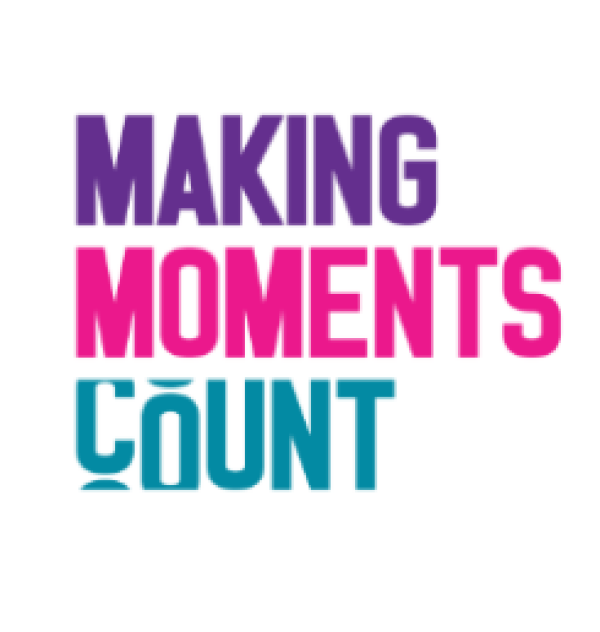Making Moments Count
We're asking you, our incredible supporters, to consider making a donation to help fund the 2026 2nds Together Retreats. SUPPORT OUR WORK

15th July 2025 by Naman Julka-Anderson
As a therapeutic radiographer, I have the privilege to meet people at one of the most vulnerable moments of their lives, diagnosed with breast cancer, facing complex treatment plans, and in some cases, already living with secondary breast cancer (SBC). For many ethnic minority patients, the challenges don’t stop after diagnosis. The barriers they face are deeper, systemic, and rooted in disparities that continue to cost lives.
Let’s start with the facts. In the UK:
Black women are more likely to be diagnosed with breast cancer at a younger age and with more aggressive forms of disease. Yet, they are less likely to be diagnosed early.
Black African women have a 39% lower chance of surviving breast cancer beyond five years compared to white women.
South Asian women are less likely to attend routine breast screening, and when they do present, it is often later, resulting in poorer outcomes.
These are not just numbers, they are missed chances, delayed diagnoses, and lives lost too soon.
You deserve the same standard of care as anyone else, and you have every right to demand it.
If something doesn’t feel right, whether it’s a symptom, a side effect, or how you’re being treated, say so. Ask questions. Ask for second opinions. You know your body best.
Organisations like Make 2nds Count and others are working hard to close the gap. Look for patient advocates or charities that understand your cultural background and specific needs. Check out a safe, accredited and informative image library to see a variety of skin changes across all skin tones here.
Even if you think something is small, get it checked. Waiting could cost you precious time.
If you feel comfortable, share your experience. We need more voices breaking the silence, challenging taboos, and raising awareness within ethnic communities.
It’s okay to ask your medical team how familiar they are with treating patients with your skin tone, your cultural needs, or your language. We must normalise these conversations.
As a therapeutic radiographer, I regularly observe how ethnicity intersects with healthcare inequality. Secondary breast cancer is already complex to treat, but for Black and Asian patients, that complexity is compounded by systemic neglect.
One of the biggest challenges is late presentation. Cultural taboos, stigma around cancer, language barriers, and fear of being a burden all play a role. Many patients have told me they ignored symptoms for months, some even years, due to misconceptions or lack of awareness. By the time they seek help, the cancer has already spread.
Breast screening saves lives. But uptake among ethnic communities remains significantly lower. Mistrust in the healthcare system, concerns about modesty, fear of pain, and lack of culturally appropriate outreach all contribute. I’ve met patients who didn’t even know they were eligible for mammograms until it was too late.
Radiotherapy comes with side effects, including skin reactions. But the reality is: skin reactions in patients with brown and black skin are under-recognised and poorly understood. Textbooks and training resources still overwhelmingly focus on lighter skin tones, leaving ethnic minority patients under-supported and misdiagnosed. This can lead to pain being underreported, or worse, ignored.
There’s a notable lack of representation in healthcare staff, educational materials, and clinical trials. This feeds a dangerous cycle: patients don’t feel seen, so they’re less likely to engage with services, and clinicians lack the experience to meet their specific needs.
Ethnic Cancer Awareness Month is a powerful reminder that cancer does not affect all communities equally. As a therapeutic radiographer, I’ve seen how devastating those disparities can be. But I’ve also seen the strength, resilience, and courage of ethnic minority women living with secondary breast cancer.
It’s time to shift the narrative. To ensure that research includes us. That screening campaigns reach us. That healthcare professionals are trained to see us, not as an afterthought, but as a priority.
Because early detection should not depend on your postcode or your skin colour. Treatment side effects should not go unnoticed because of a lack of training. And trust in the system should not be a luxury reserved for some.
We owe it to every person living with secondary breast cancer, especially those from ethnic minority backgrounds, to do better. To listen. To advocate. And to act.
Every second counts. Let’s make them matter.
Naman Julka-Anderson
Research Radiographer, Allied Health Professional Clinical Advisor Macmillan Cancer Support, Rad Chat Podcast and Education Platform Co-Founder, Ambassador for Radiotherapy UK Charity.